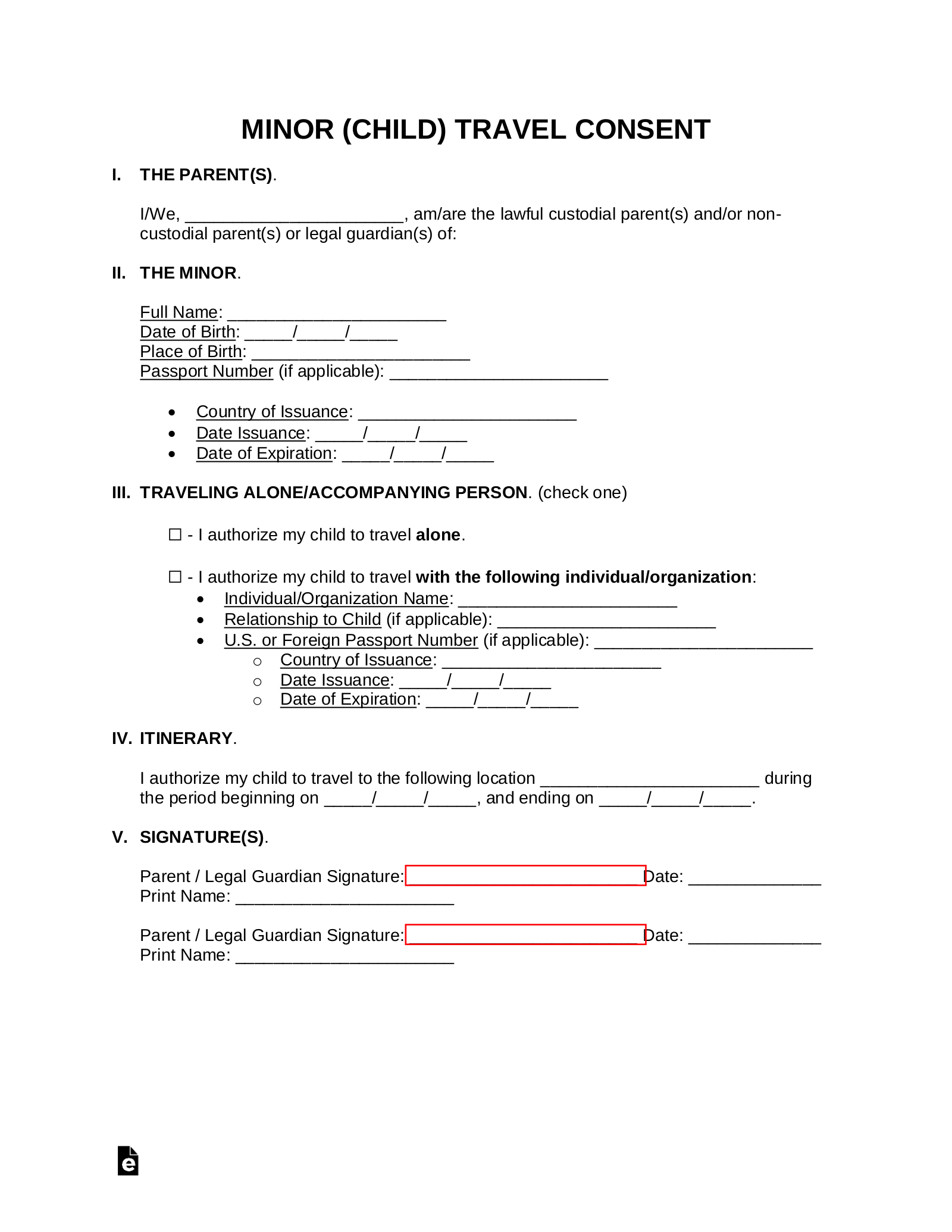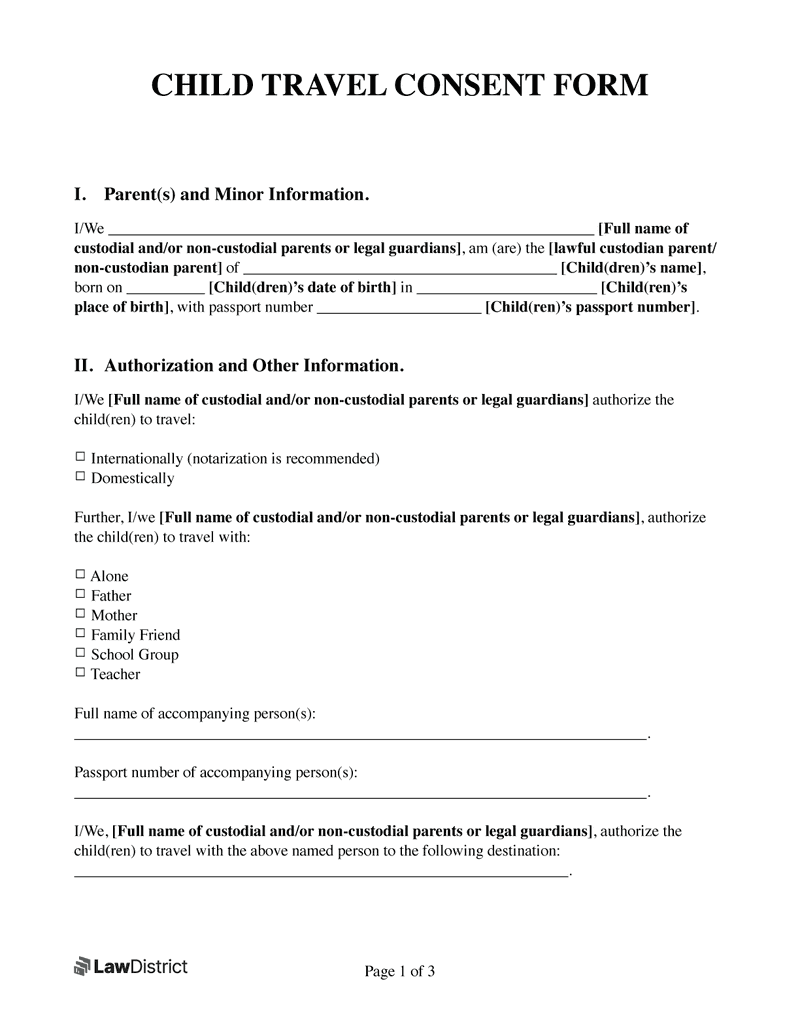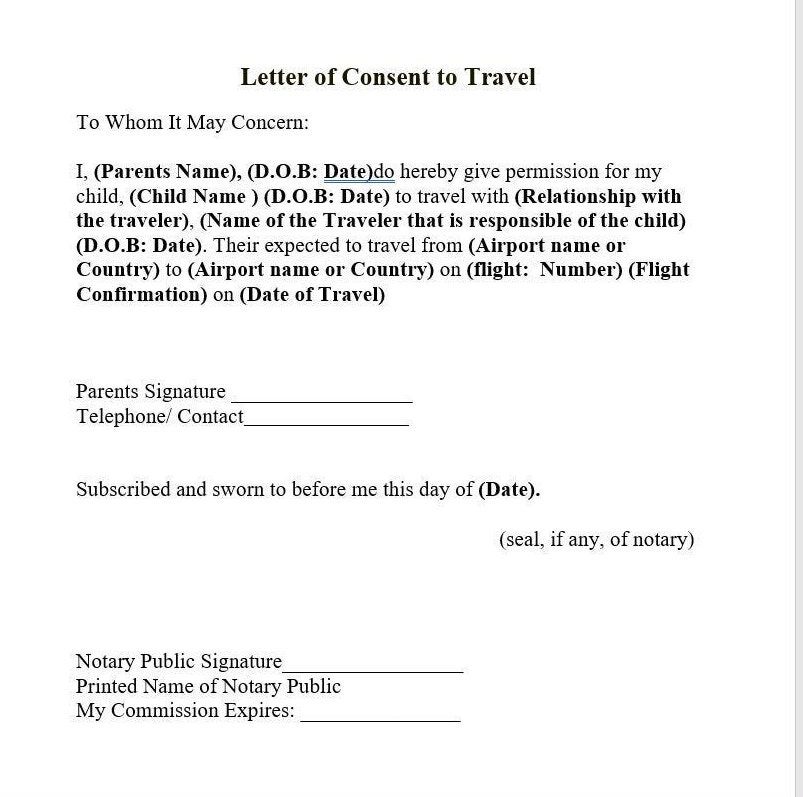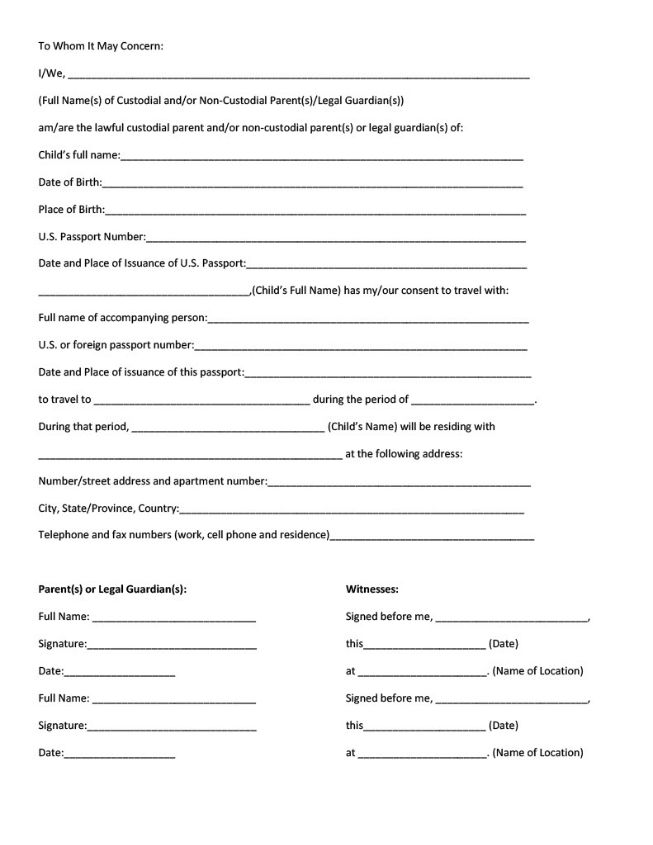Traveling with minors can be an incredibly rewarding experience, offering fun, adventure, and valuable life lessons. However, ensuring that all legalities are properly addressed is crucial, especially when it comes to consent. In this comprehensive guide, we will delve deep into the minor travel consent form notary, discussing its importance, how to obtain one, and providing useful travel tips based on personal experiences. So grab your suitcase and let’s embark on this journey!
What is a Minor Travel Consent Form?
A minor travel consent form is a legal document that grants permission for a child under 18 to travel without both parents or legal guardians present. This form is essential, particularly for international travel, as it verifies that the traveling adult has the right to take the minor out of the country.
Reasons for a Minor Travel Consent Form
When you travel with minors, the consent form serves several purposes:
- Prevents potential kidnapping allegations
- Avoids delays at border crossings
- Ensures smooth travel for children traveling with one parent or relatives
Personal Experience: My Trip to Costa Rica
During my unforgettable trip to Costa Rica with my niece, I learned firsthand how vital the minor travel consent form can be. Arriving at the airport, I noticed families with kids barely making it through check-in due to missing documentation. However, with the consent form securely in hand, we breezed right through.
The Role of Notary in Minor Travel Consent Forms

The notary public plays a crucial role in the minor travel consent process. They validate the signatures on the consent forms, ensuring that the document is authentic and legally binding.
What Does a Notary Public Do?

A notary public is an official appointed by the state to serve as an impartial witness in the signing of important documents. When it comes to minor travel consent forms, a notary public performs the following functions:
- Confirms the identity of the signers
- Watches the signing of the document
- Applies their official seal to the document
How to Get a Minor Travel Consent Form Notarized

Here’s a step-by-step guide to getting a minor travel consent form notarized:
Step 1: Obtain the Consent Form
You can find templates for minor travel consent forms online or create a custom one. Just make sure it meets the requirements of the state or country where you reside.

Step 2: Fill Out the Form
Ensure that all necessary sections are filled out correctly, including details about the minor, the traveling adult, travel dates, and destination.
Step 3: Find a Notary Public
Notaries can be found at banks, law offices, or designated notary services. Schedule an appointment with a qualified notary.

Step 4: Appear Before the Notary
Bring the completed form, identification, and any other required documents to the notary’s office. Both parents (or legal guardians) usually need to be present.
Step 5: Sign and Notarize
The notary will witness the signing and apply their stamp or seal to the form, making it official.

Do I Need a Notary for Domestic Travel?
While a notary is not typically required for domestic travel, having a notarized travel consent form can still be beneficial. It can prevent unwanted questions from authorities and ensure smoother travel for your child.
Destination Highlights: Traveling with Minors
Family-Friendly Destinations
Here are some fantastic destinations that are especially welcoming for families traveling with children:
| Destination | Activities | Age Suitability |
|---|---|---|
| Disney World, Florida | Theme parks, character meet-and-greets | All ages |
| San Diego, California | Beaches, zoos, and museums | All ages |
| London, England | Historical sites, museums | 7 and up |
| Auckland, New Zealand | Outdoor adventures, cultural experiences | 5 and up |
Personal Tip: Explore Local Attractions!
On my recent trip to San Diego, we took advantage of local attractions like LEGOLAND and the San Diego Zoo. Each experience was tailored to entertain kids of different ages, making it a hit for our family!
Pros and Cons of Notarizing a Minor Travel Consent Form
Pros
- Validates the permission granted for a minor to travel
- Reduces the chances of legal issues at borders
- Gives peace of mind to parents
Cons
- Inconvenience of scheduling a notary appointment
- Potential costs associated with notary services
- Additional paperwork required
Frequently Asked Questions (FAQs)
1. Do both parents need to sign a minor travel consent form?
Yes, typically both parents or legal guardians must sign the form. If one parent cannot be present, they may need to provide a notarized signature.
2. What if one parent is deceased?
If one parent is deceased, a copy of the death certificate may need to be provided along with the consent form from the surviving parent.
3. Can a grandparent take a minor on a trip?
Yes, a grandparent can take a minor on a trip, but it’s essential to have a notarized consent form from the child’s parents or guardians.
4. Is there a specific format for a minor travel consent form?
While there is no standardized format, the form should include important information such as the child’s details, details of the traveling adult, travel itinerary, and signatures of the parents or guardians.
5. How long is a notarized minor travel consent form valid?
A notarized consent form is generally valid for the duration of the trip specified within the document. However, it’s wise to check with your destination country’s regulations.
Conclusion: Travel Responsibly with Minors
Traveling with minors is an enriching experience filled with memories and adventures. However, taking the proper legal precautions, such as having a minor travel consent form notarized, is equally important. By preparing ahead of time and ensuring all necessary paperwork is in order, you can focus more on enjoying your trip and making lasting memories with your loved ones.
Whether you’re headed to the enchanting streets of London or the thrilling rides at Disney World, happy travels!